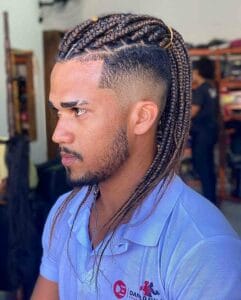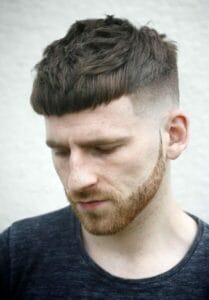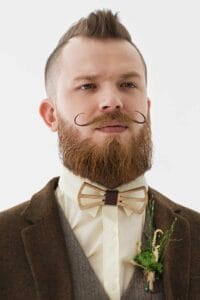Unlock the Secrets of the Caesar Cut: Nailing the Classic Hairstyle
Are you thinking about trying the Caesar cut?
This timeless hairstyle has been a favorite of men for decades, and for good reason. Not only is it easy to style and maintain, but it’s also versatile enough to suit a variety of face shapes and hair types.
In this article, I’ll take a deep dive into the world of the Caesar cut, sharing everything you need to know about getting the perfect look.
From tips and tricks to expert advice, you’ll find everything you need to make an informed decision about whether the Caesar cut is right for you.
So if you’re ready to give this classic hairstyle a try, read on!
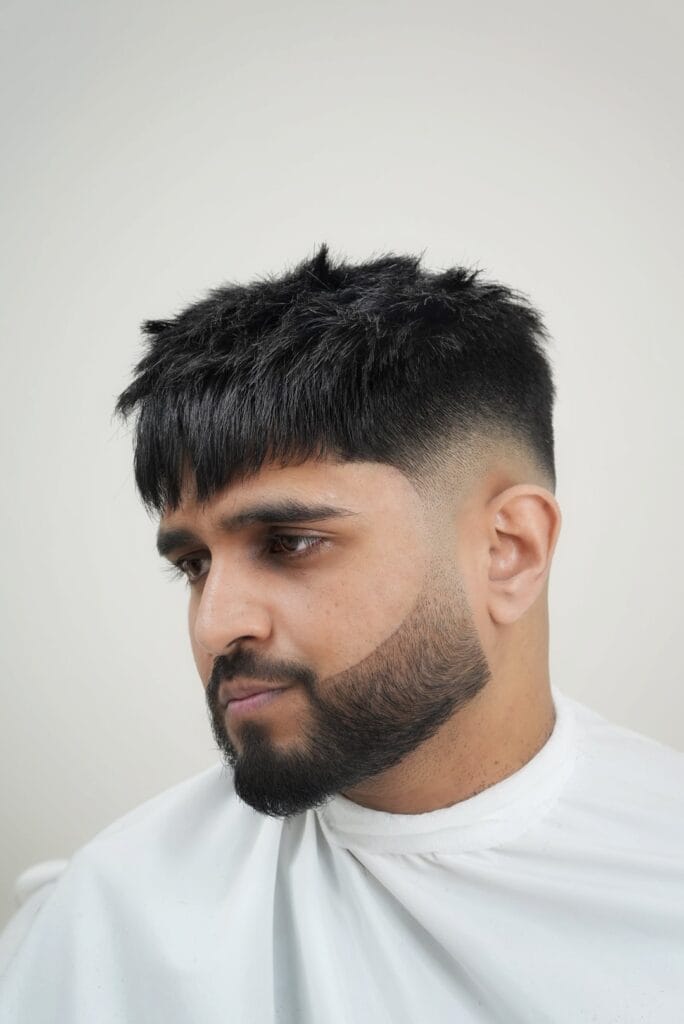
The Best Types of Caesar Cut Now
Receding Hairline Caesar Style
If you’re starting to lose your hair, you may be wondering if there’s anything you can do about it. One option is the Caesar haircut.
It involves shaving the sides of your hair short and leaving the top longer. This look can help minimize the appearance of a receding hairline by making it less noticeable.
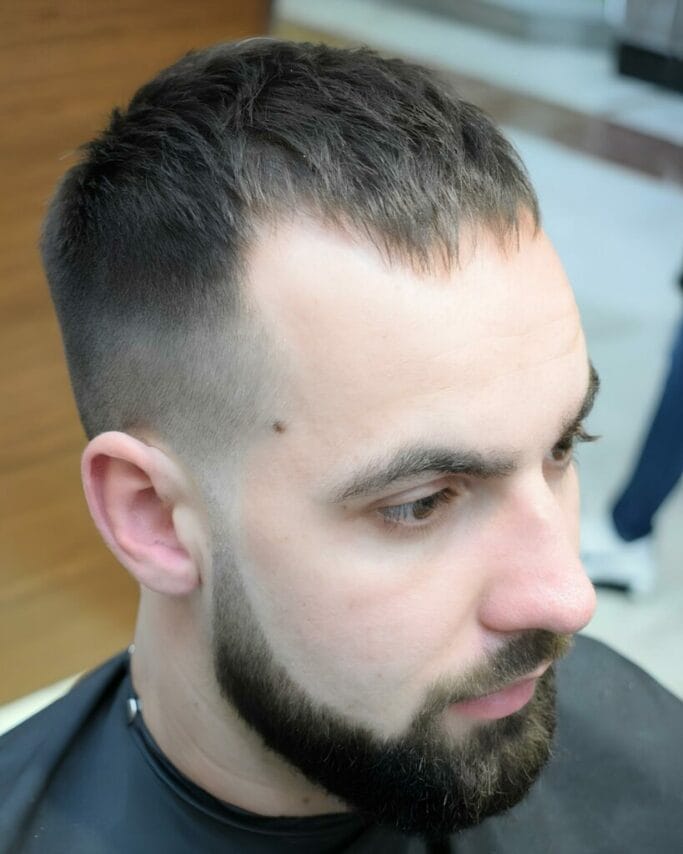
Thinning Hair Caesar Hairdo
A thinning-hair Caesar haircut is a shorter version of the classic Caesar cut. The main difference is that instead of being cut to lie flat against the head, the hair is cut in short, sharp layers that create a more textured look.
This type of haircut can be very flattering for men who are starting to experience some hair loss, as it creates the illusion of thicker hair.
Caesar Cut with Clippers
To get a Caesar haircut with clippers, start by combing the hair forward and then cutting the sides and back short using the desired guard size.
Next, create a horizontal line across the back of the head using the comb as a guide. Then, work in small sections, cut each section of hair above this line at an angle so that it points toward the center of the head.
Finally, trim the front section to your desired length and shape it however you like.

No Fade Caesar
If you want a haircut that will never fade away, then you should get the No Fade Caesar haircut. This particular haircut is named after Julius Caesar, who was known for his great leadership skills.
And, just like how Caesar was a great leader, this haircut will make you look like a true leader as well. With its clean-cut and timeless look, the Caesar haircut is perfect for every man who wants to look his best.
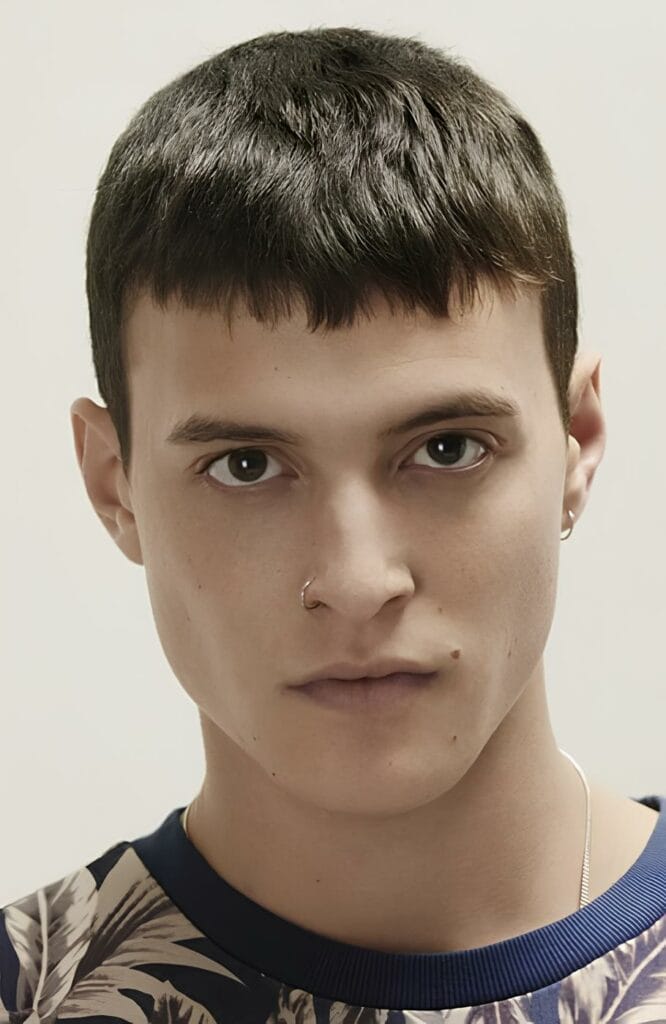
Light Caesar Hair
Light Caesar haircuts are characterized by their short length and clean, sharp lines.
This style is versatile and can be worn in several ways, making it a popular choice for men. The light Caesar haircut is easy to maintain and can be styled to suit every face shape or hair type.

Bearded Caesar Hairstyle
The Bearded Caesar haircut is a classic look that has been around for centuries. This style is perfect for guys who want to add a bit of sophistication and class to their appearance.
The Bearded Caesar haircut involves shaving the sides of the head short while leaving the beard long and full.
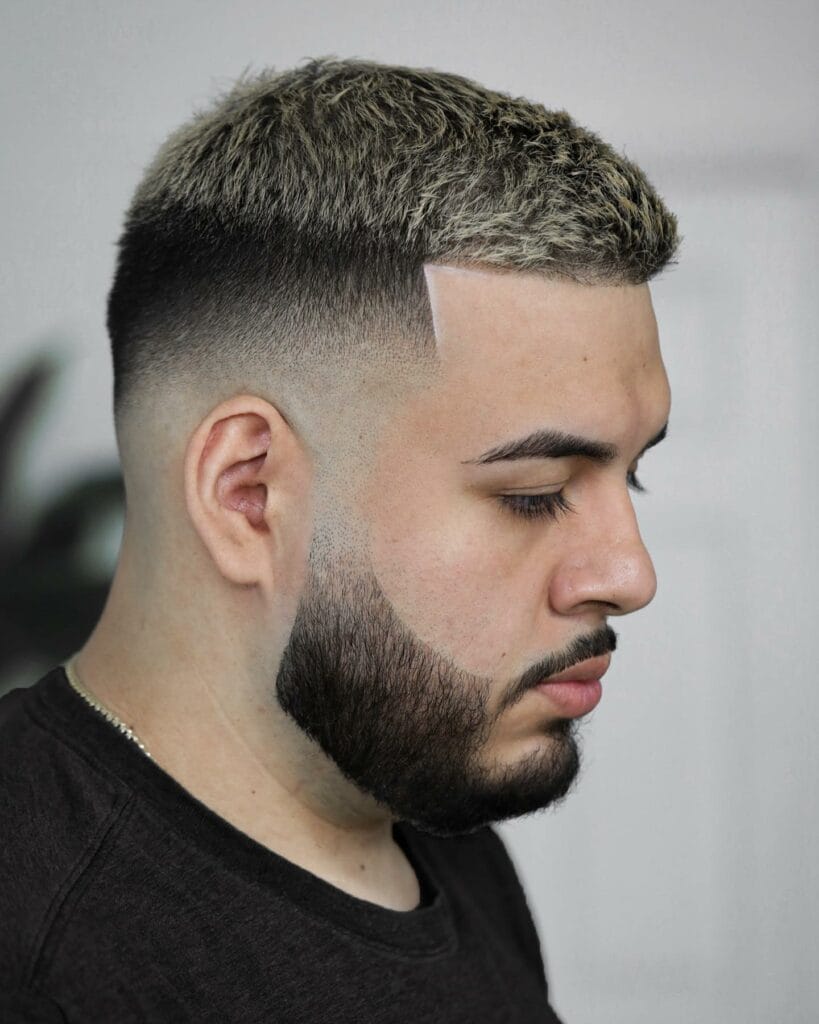
Classic Caesar French
When it comes to hair, there is no denying that the French have a certain way to get this style.
They just seem to know how to style it in a way that is effortless and chic. And, while we may not be able to pinpoint exactly what it is, I do know one thing for sure: I want whatever they’re having.
If you’re looking to add a little wow factor to your own hairstyle, why not try out a classic French Caesar?
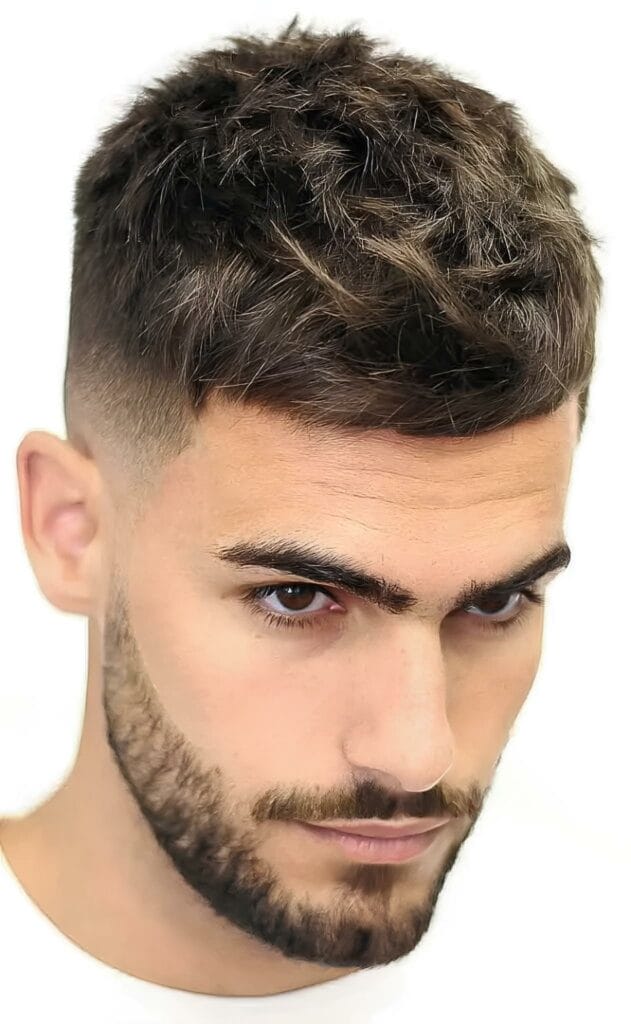
Caesar with Line
A Caesar haircut with a line is a timeless classic hairstyle for men. It is a versatile look that can be worn both formal ocasion and casually. The Caesar haircut with a line is also easy to style and maintain.
To get the Caesar haircut with the line, simply ask your barber or hairstylist for a short on the sides and back with longer hair on top. Then, add a clean-cut line above the forehead.
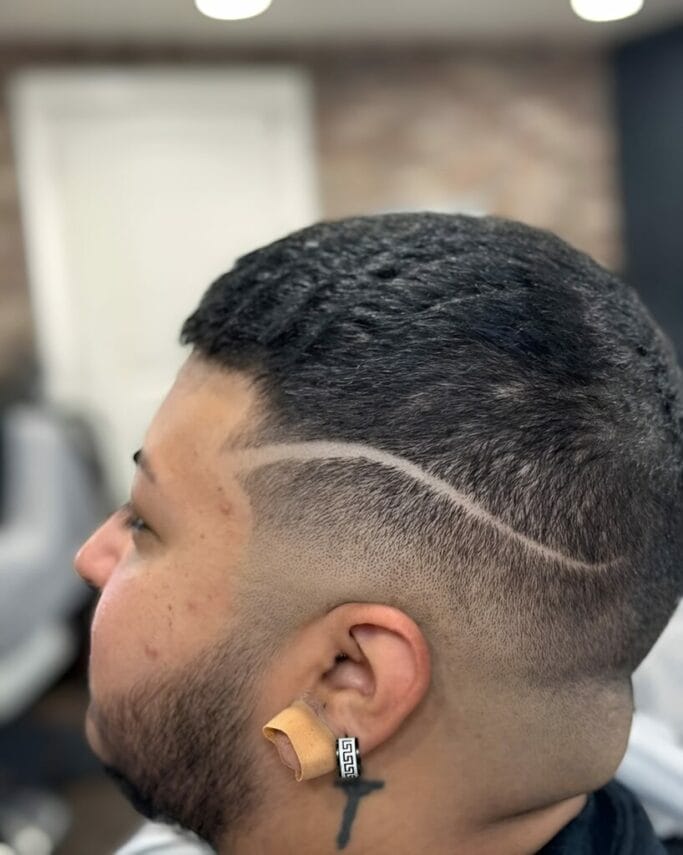
Skin Faded Caesar Cut
A skin-faded Caesar haircut is a popular choice for guys who want a stylish, low-maintenance look. The skin fade is achieved by shaving the hair very close to the scalp, creating a smooth transition from short to long hair.
By combining these two styles, you can create a trendy yet timeless look that is attractive for every occasion.
Finally, have your barber use a razor to give you sharp lines around the edges of your haircut. With this skin faded Caesar haircut, you will have a stylish and easy-to-manage hairstyle that looks great with every outfit you wear.
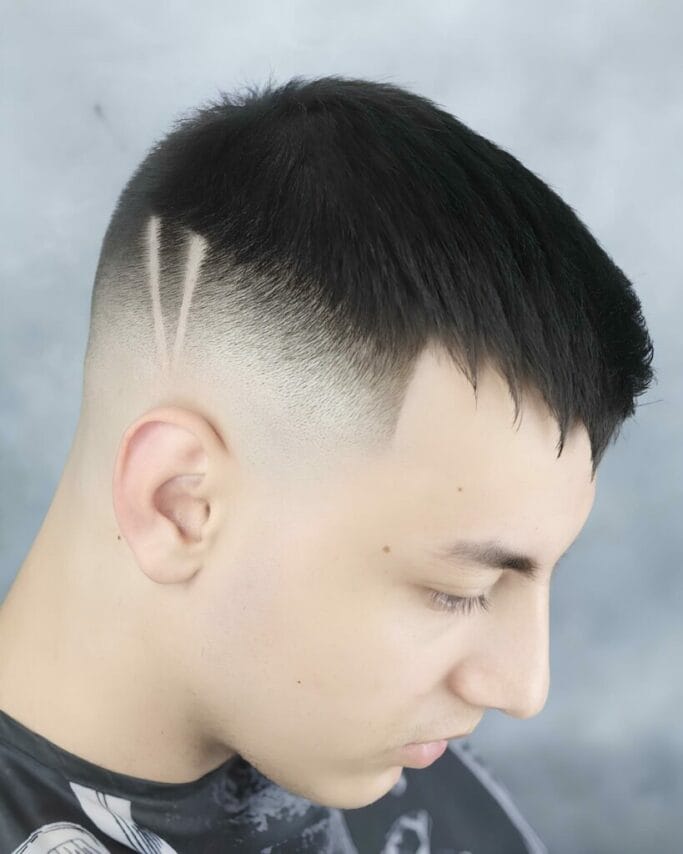
Franklin Caesar Hairdo
Franklin Caesar is a world-renowned hairstylist who has been in the business for over 20 years.
Franklin’s signature haircut is known as the “Franklin Caesar”. Franklin’s haircuts are always trendy, and he is constantly innovating new styles to keep up with the times.
If you are looking for a cutting-edge hairstylist who can give you a glamorous, celebrity-worthy haircut, then look no further than Franklin Caesar.

Dark Caesar Cut
The Dark Caesar haircut is a popular choice for men who want a stylish and sophisticated look. This haircut features short, cropped sides and a longer top that can be styled in several ways.
The Dark Caesar is a versatile haircut that can be styled to suit every occasion, from the office to a night out on the town.
If you’re looking for a sharp and stylish haircut, the Dark Caesar is worth considering.
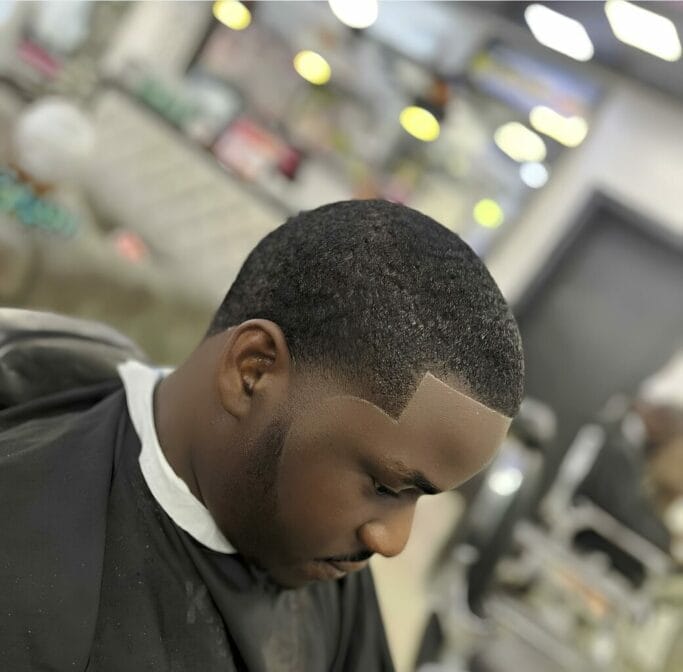
Curly Caesar Style
The curly Caesar haircut is a great choice for men with curly hair. This haircut is a shorter version of the traditional Caesar cut and can help to control and tame your curls.

Jaguar Haircut
If you’re looking for a new hairstyle that is both stylish and unique, then you may want to consider the Jaguar Caesar haircut.
It features short, cropped sides and back with a longer section in the front. This style is perfect for guys who want to make a statement with their hair.
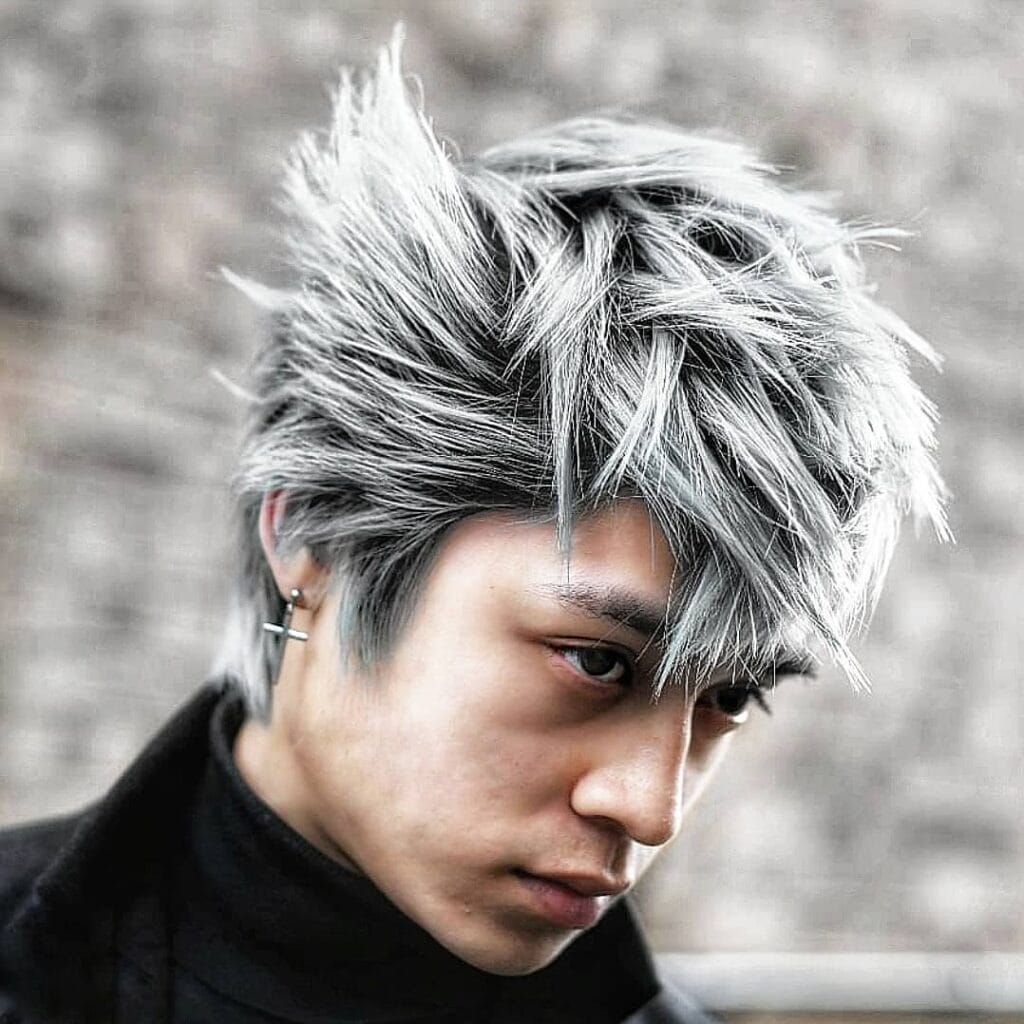
Julius cut
Caesar’s hairstyle is one of the most iconic and influential haircuts in history.
The style was so popular that even after his death, many people continued to wear their hair in the same fashion. 
Long Caesar Style
There are many different ways to style long hair, but one of the most popular is the long Caesar haircut.
This look is characterized by short, layered sides and a longer top that is often textured or spiked.

Short Caesared Hair
If you’re looking for a short Caesar haircut, there are a few things you should keep in mind. First, Caesar haircuts are generally shorter on the sides and longer on the top.
This particular style is ideal for those with thick, wavy hair. Second, a short Caesar haircut will require more frequent trimmings than other styles.
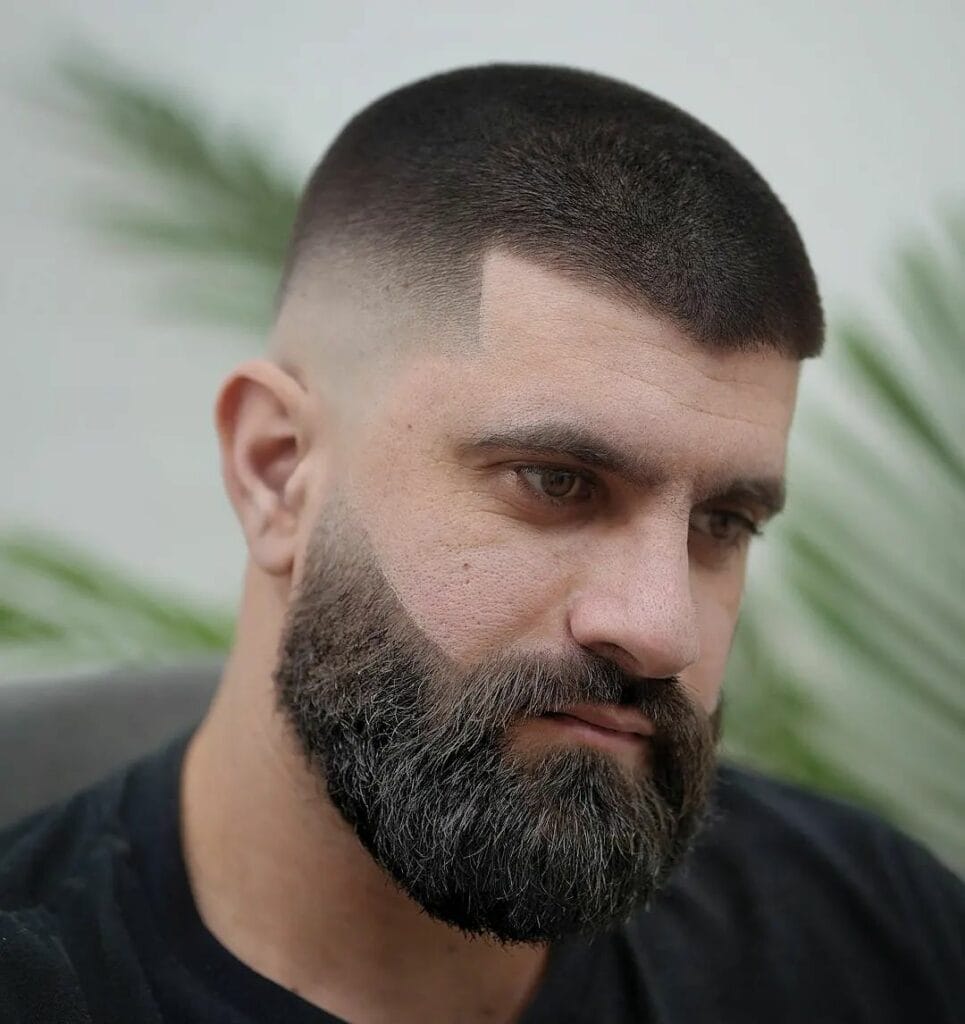
Caesared with Long Bangs
This look is simple yet stylish and can be easily achieved with long bangs. To get this look, start by getting a trim around the sides and back of your head. Next, use a comb to part your hair down the middle.
Then, take small sections of hair and comb them forward towards your forehead. Repeat this process until all of your hair is styled in this manner.
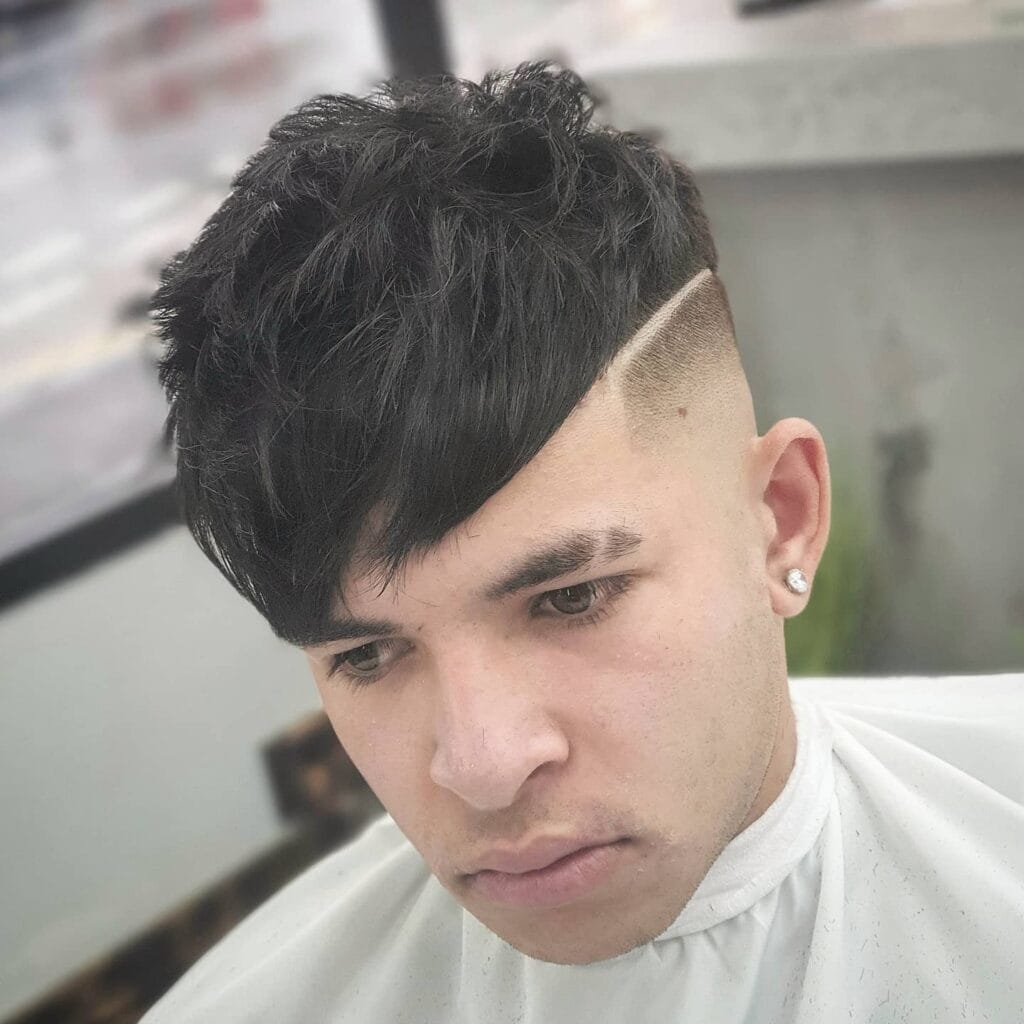
Original Caesar Cut
To get an Original Caesar haircut, start by getting your hair cut short all around using scissors or clippers.
Then, have your barber or stylist trim your bangs so they sit just above your eyebrows and are long enough to sweep to the side.
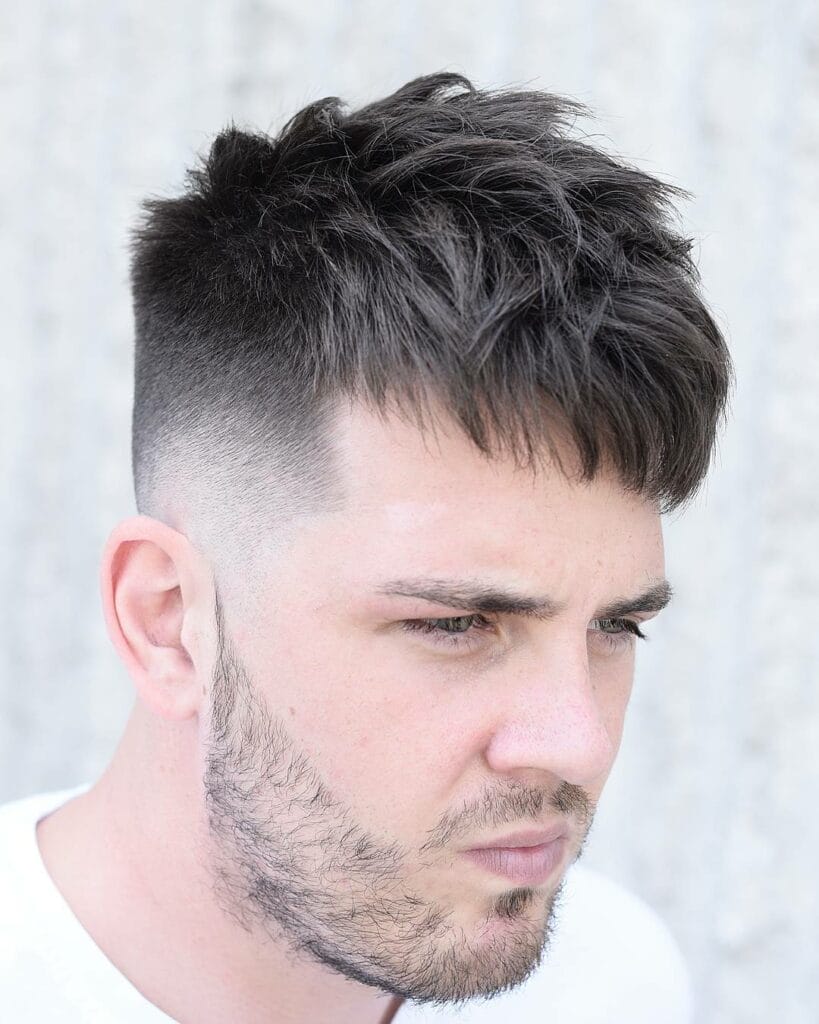
Oblong Haircut
The oblong caesar haircut is a versatile and stylish option for men who want a short, low-maintenance hairstyle.
This look is achieved by cutting the hair short on the sides and back while leaving the top longer.

Caesar Haircut with Tattoo
This haircut is usually worn with a tattoo on the back of the neck. The tattoo can be anything from a simple design to a complicated piece of artwork. Whatever the reason, this is a popular choice for many men.
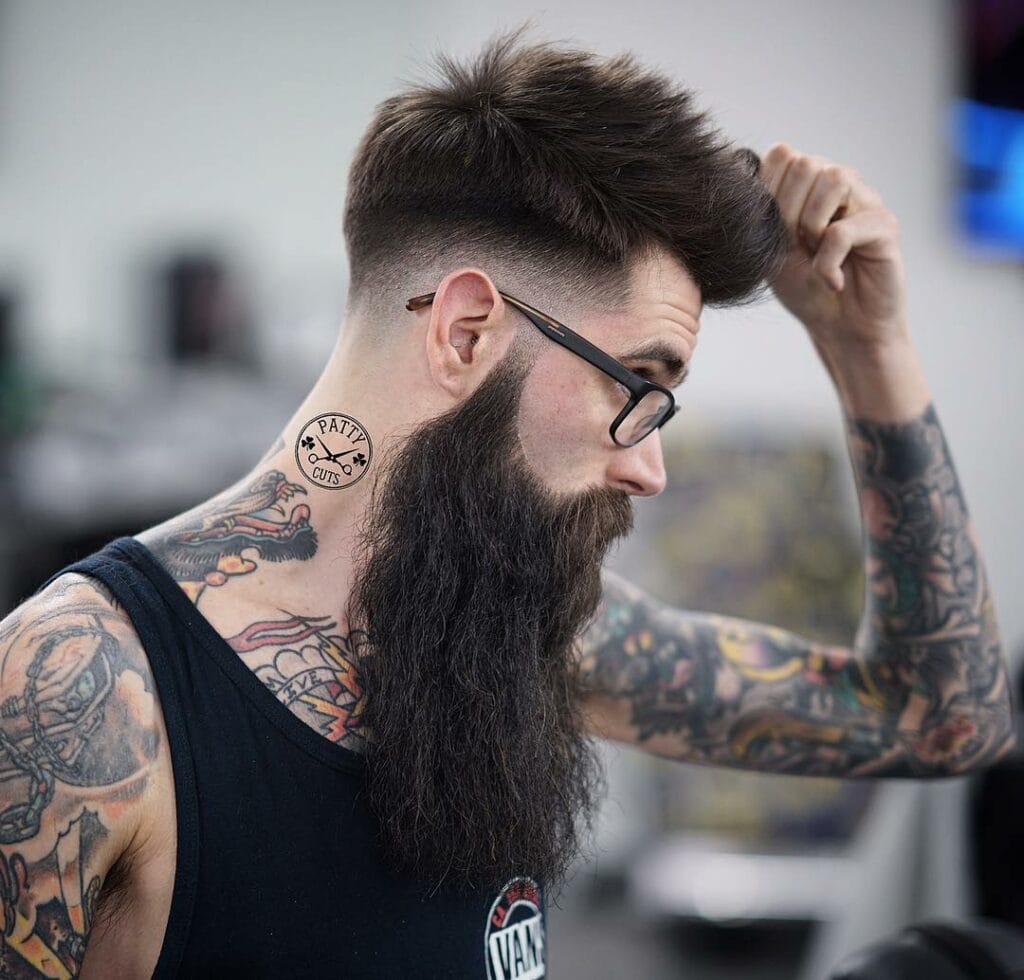
Conclusion
To summarize, the Caesar haircut is an adaptable and stylish option for men of all ages. It can be worn short or long, depending on your preference, and with or without bangs. Whether you’re looking for a low-maintenance style or something more formal, the Caesar is a great choice. With its clean lines and classic look, it’s no wonder this haircut continues to be one of the most popular options for men.
Hopefully, you have enjoyed the post about Caesar HaircutsIt is time now to improve this hairstyling trend. Are you going to wear the Caesar Haircuts from the above list? If you still have some doubts if they will look good on your head, take a moment to check some quick answers by scrolling down below at our FAQ Section. Also read, 8 Stunning Asian Caesar Cut to get trendiest loo
Caesar Haircut FAQ
How To Style Caesar cut?
There are many ways to style a Caesar cut. One popular way is to keep the front of the hair long and swept forward while shaving the sides and back short. This look is easy to maintain and can be styled with gel or pomade for a more polished appearance.
How do you ask for a Caesar cut?
Show the barber a photo of what you want. This can be helpful if you’re not sure how to describe the haircut or if you want to make sure the barber knows what you mean.
Which Is The Most Popular Caesar Haircut?
The most popular Caesar haircut is the classic cut, which is a short, simple style that works great for all hair types.
Are Caesar cuts attractive?
Yes, Caesar cuts are attractive. It is a very popular and stylish haircut for men. It is a short, clean-cut that is easy to style and maintain. The haircut gets its name from the famous Roman Emperor Julius Caesar, who was known for his short, cropped hair.
What number is a Caesar cut?
Caesar cut number is between 1 to 4(1 and 2 inches hair length). So, select a guard that will provide you with the appropriate length. A number 1 clipper guard is ideal for extremely short hair, while a number 4 clipper guard is ideal for longer hair.
Is a Caesar cut good for thinning hair?
Yes, Caesar cut is good for thinning hair. It helps to minimize the appearance of a receding hairline by making it less noticeable.
Why is it called the Caesar cut?
Caesar’s haircut is named after Julius Caesar, the famous Roman Emperor. The haircut involves shaving the sides of the head and leaving a strip of hair in the middle.
REFERENCES:
The Caesar cut is a hairstyle with short, horizontally straight cut bangs. The hair is layered to around 2–5 cm (1-2 inches) all over. source
The Caesar haircut is a short style that is cut the same length all around and brushed forward. source
Khamis Maiouf is a professional barber who graduated from Hinckley College in England with a degree in hairdressing. He has also won several barbering contests and successfully operated a barbershop for the last two decades. As a skilled hair stylist for 20 years, his goal is to teach others how to achieve a beautiful appearance through their hairstyles.
